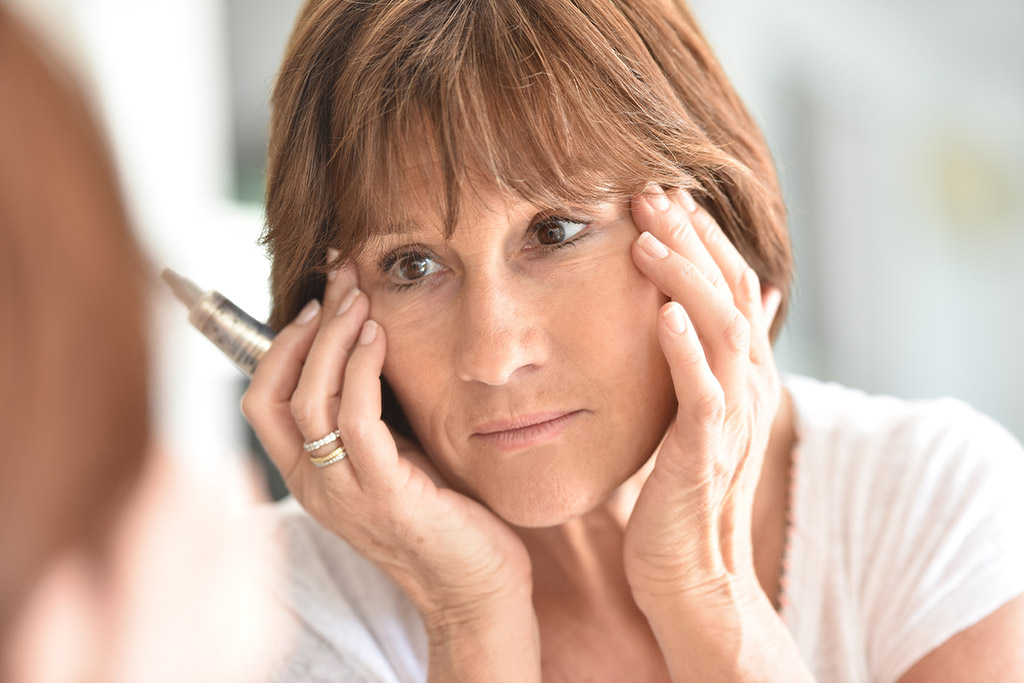
The Signs of Aging Eyes
The eyes are one of the first areas to experience signs of aging. Aging can affect the pigment, elasticity, and thickness of the skin surrounding the eye. However, there are other factors that affect eye appearance, including bone and muscle which provide support. Any of these factors can contribute to the signs of aging, requiring a customized approach for each patient. Schedule a consultation with a Compassion Dermatology, dermatologist in Southlake, TX today.
The following are the foremost aesthetic complaints involving the eyes, and what your dermatologist in Southlake, TX can do to address them.
Dark Circles Under the Eyes
While dark circles under the eyes are often hereditary, allergies and fatigue can enhance them. There are a number of causes, and each treatment requires an individualized approach. Some of these causes include:
The Loss of Collagen
Skin that appears thin and translucent allows blue veins to be more visible due to the loss of collagen. As we age, collagen production is reduced, leading to less elasticity to the skin.
The Loss of Bone and Fat
Volume loss beneath the skin can cause a concavity, which allows shadows to create the appearance of dark circles.
Blood Vessel Congestion
Allergies and sleeping on your stomach can cause this condition.
Hyperpigmentation
The darkening skin around the eyes can be a natural part of the aging process. This is especially true of individuals with darker skin. Consistent rubbing of the eyes and inflammatory conditions, such as eczema also exacerbate it. Chemical peels, light treatments, and skin lightening cream are two of the potential treatments.
Infra-orbital Fat Pad Protrusion
Often described by patients as “bags under the eyes”, blepharoplasty is the solution. For some patients, the problem is infra-orbital edema, rather than the downward migration of fat pads. Allergies, retention of fluids due to high blood pressure, excessive sodium intake, sinus infections and crying are common causes. Treatment of allergies and/or sinus infections or underlying medical conditions can reduce under eye edema. If puffy eyes occurred suddenly, see your doctor, It may indicate cardiac or kidney issues, for example. In addition, avoid sleeping in eye makeup, which can irritate the eyes and worsen under eye edema. Use an ice pack, cucumber slices or chilled tea bags to reduce periorbital edema.
Tips and Treatments
- When sleeping, elevate the head and do not sleep on your stomach.
- Talk to your doctor about using an antihistamine for allergies.
- Visit a dermatologist in Southlake, TX for an accurate evaluation, and treatments that can thicken collagen. For example, a topical retinoid once or twice a week on the eyelids can thicken the skin, and reduce the appearance of dark circles, fine lines and crinkly skin. Your dermatologist in Southlake, TX can assess the causes and provide the treatment you require.
- Skin lightening cream and chemical peels can fade the effects of true hyper-pigmentation. Talk to your dermatologist in Southlake, TX.
- The volume loss of bone and fat can be treated with fillers in the affected area. Your dermatologist in Southlake, TX will discuss the preferred treatment for your problem.
- Wrinkles and skin sagging can contribute to dark circles. Resurfacing cream and laser are two examples of the treatments available.
- Drooping eyelids result due to the loss of elastin production. For some, the condition may become so bad that surgery is required, called blepharoplasty or an eye lift. Excess skin is removed, tightening the eyelid for a more youthful appearance.
- Repetitious movements such as squinting can cause crow’s feet in the epidermis at the corner of your eyes. Botox is an example of a product that helps to stop the repetitious movement, preventing creases from forming or getting deeper. Sometimes, crows feet are due to fat and bone loss. These patients often complain Botox is not effective. Wrinkles that remain even in a relaxed position may be a candidate for a filler to lift the skin and reduce the appearance of wrinkles. Wear 100 % UV protected sunglasses to prevent squinting and to filter out damaging UV rays.
- Hollow eyes can be caused from the fat pads shifting downward with age as the membrane holding it weakens, and the bone begins to diminish. Filler can reduce eye hollows while giving the brow bone the appearance of a more youthful lift. Severe weight loss is an additional cause of the trough constituting hollow eyes.
- Be gentle when cleansing your face, especially around the eyes where the skin is very delicate. When washing your face, always pat dry to avoid stretching the skin. Apply moisturizer to the eye area. The area around the eye is very responsive to specific products, injectables and laser. Our dermatologist in Southlake, TX can help you to look younger.
- Avoid smoking, which causes premature aging of the skin with collagen loss. With its chemical effects and repetitious motions, smoking is one the top causes of premature aging. For many persons, the cessation of smoking results in the improvement of skin, and in some situations, an improved appearance of fine wrinkles. Consult your dermatologist in Southlake, TX for solutions to your skin problems.
At Compassion Dermatology, you can trust our dermatologist in Southlake, TX to provide professional and up-to-date treatments for a variety of skin issues, including cosmetic and medical treatments. Give us a call today.



